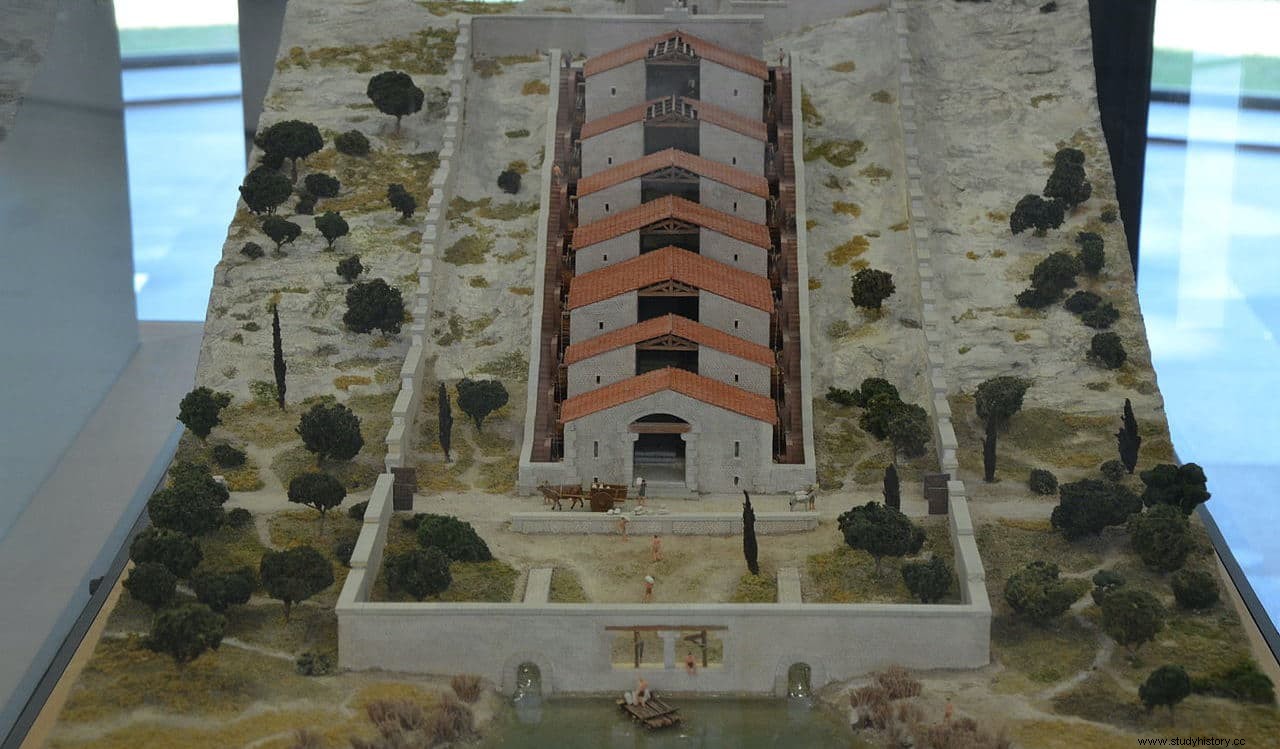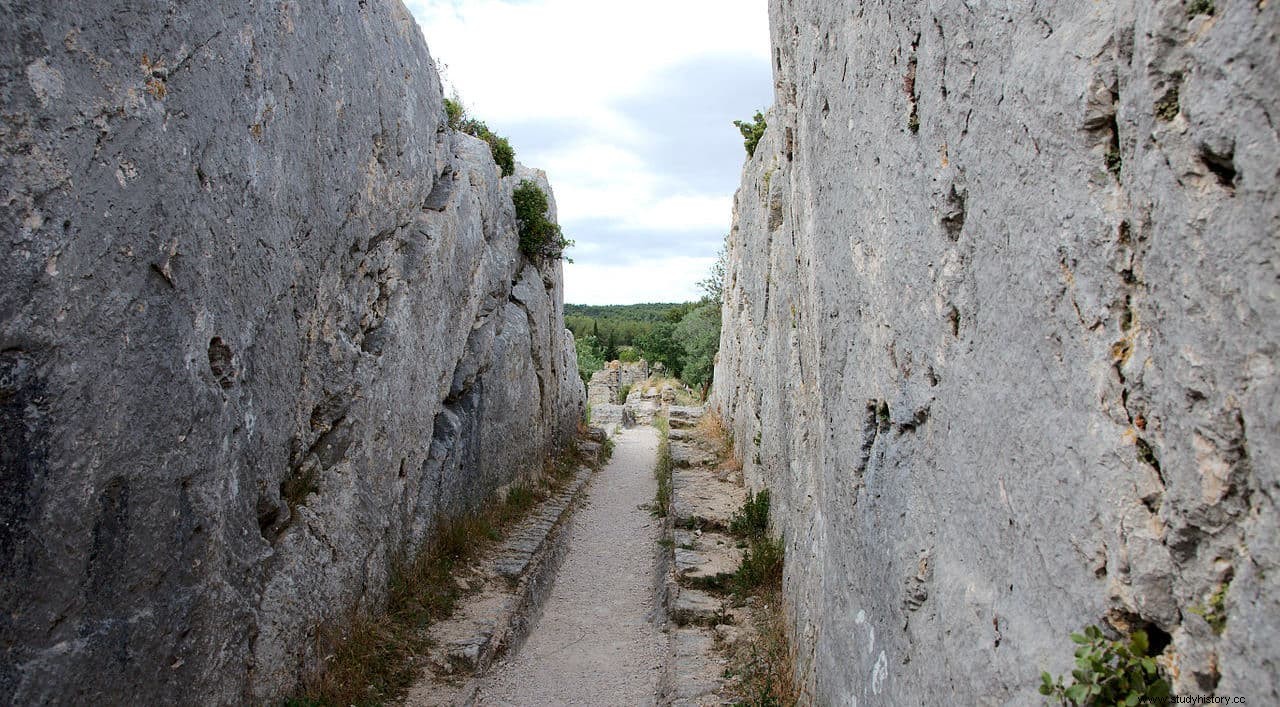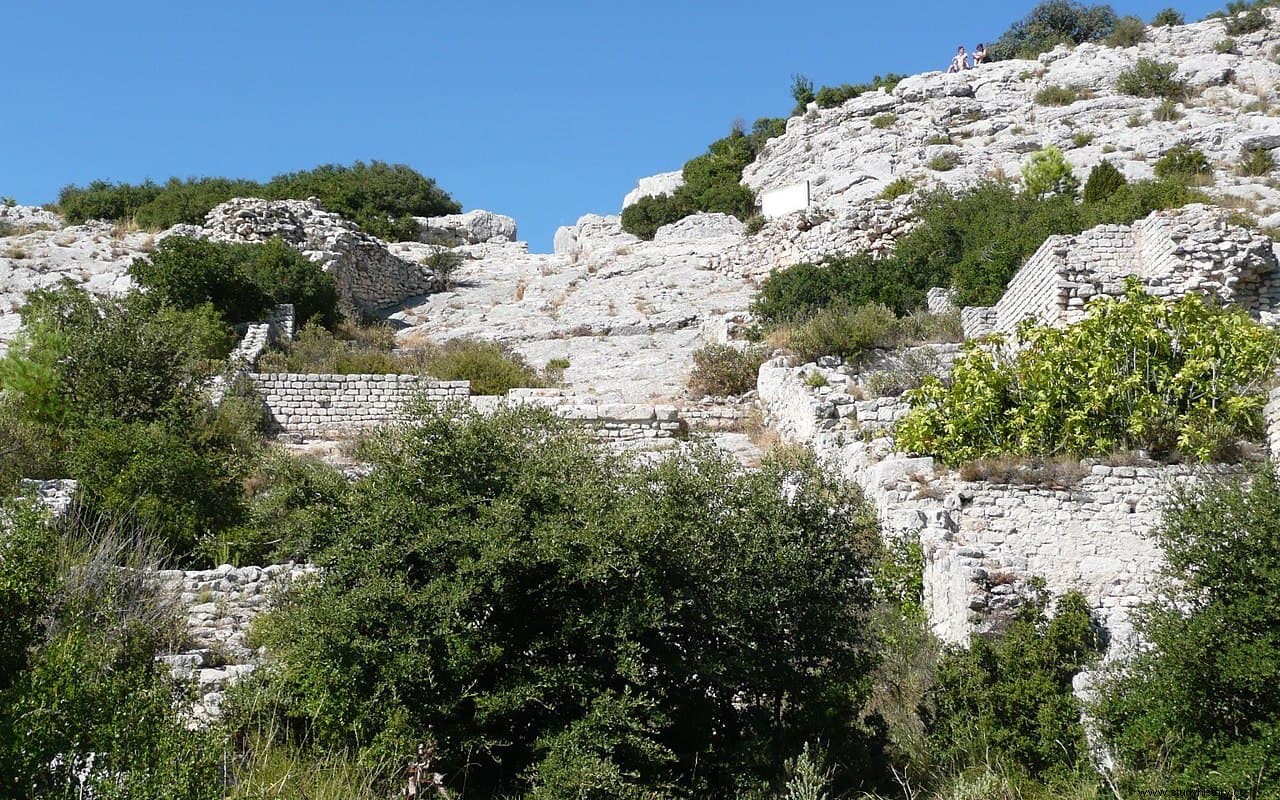About 12 kilometers north of the city of Arles, in the Provence region of southern France, is the small town of Fontvieille. It is a commune of just 3,500 inhabitants that lives from agriculture and tourism, but until the 5th century AD. It was also the place where the greatest concentration of mechanical energy in the entire ancient world was found.
And it is that it was built there at the end of the 1st century AD. the most important Roman hydraulic complex, made up of two aqueducts and 16 mills, today called Barbegal.
The two aqueducts joined just north of the complex, where a lock controlled the water supply to the mills, and then continued to supply the city of Arelate (present-day Arles).

The water went down the slope of a steep hill along which the 16 hydraulic wheels were arranged in two parallel sets on both sides of the channel, so that the flow of the first ones was driving the successive wheels to the base of the hill.
The capacity of these waterwheels, which were used to grind flour, is estimated at around 4.5 tons per day, which would have made it possible to feed the entire population of Arelate (which at the beginning of the 2nd century AD was approximately 12,500 inhabitants).
Some researchers believe that they could also have been used to saw wood and cut stone, when they were not grinding wheat, due to the similarity in the layout of the mills with those found in some Roman mines in Spain and Wales, as well as with the Hierapolis sawmill (3rd century AD). ), where a frame saw was similarly activated.

It is known that the complex remained in use during the 2nd and 3rd centuries A.D., to gradually decline later, until its complete destruction and abandonment in the 5th century, coinciding with the invasions that put an end to the Western Empire.
According to the archaeologist Fernand Benoit, the complex could have been built by the Gallo-Roman engineer Q.Candidius Benignus (Fifth Cándido Benigno), who belonged to the body of carpenters of Arelate and whose sarcophagus bears an inscription that says:no one surpassed him in the art of mechanical engineering and in the conduction of watercourses .

As for the ownership of the mills, Benoit believes that they probably belonged to the owner of the Roman villa near La Mérindole.
Today there are important masonry remains of the water channels and foundations of several of the mills, in addition to the stepped channel that ascends the hill, which can be visited. At the Fontvieille tourist office there is a reconstruction of one of the waterwheels, and a reconstruction of the whole can be seen at the Arles Museum.
